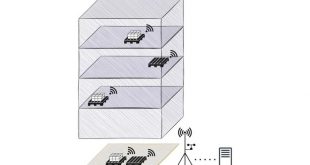By: Mohammed Gahlan
A few weeks ago, Apple unveiled its latest innovation, Vision Pro, an augmented reality (AR) headset designed to revolutionize digital interaction. But Apple is far from alone in this space. Tech giants like Google, Microsoft, Meta, and others have long been investing in AR, each contributing to its evolution in unique ways.
Google’s ARCore and the now-defunct Google Glass were among the first attempts to integrate AR into everyday life. Microsoft’s HoloLens has carved a niche in enterprise and industrial applications. Meanwhile, Meta, through Oculus and Reality Labs, continues to push AR forward, blending it with virtual reality (VR). Other companies, including Snapchat, Magic Leap, and Nvidia, are also racing to shape the future of AR.
Blurring the Line Between Reality and Digital
At its core, augmented reality overlays digital elements onto the real world, enhancing what we see, hear, and experience. Unlike virtual reality, which immerses users in an entirely digital environment, AR bridges the physical and virtual, creating interactive experiences that are reshaping gaming, education, healthcare, e-commerce, and social networking.
Imagine trying on clothes virtually before buying them online, attending medical consultations enhanced by real-time 3D models, or learning complex subjects through interactive AR lessons. The possibilities are endless. AR is not just about entertainment—it is a technology redefining how we engage with the world around us.
The Internet’s Next Big Challenge?
But as promising as AR is, it presents serious challenges for the internet infrastructure. The seamless experiences we expect from AR require:
• High-speed connectivity and low latency – Without 5G or fiber-optic speeds, real-time AR interactions can lag, reducing their effectiveness.
• Robust data security and privacy protections – AR collects massive amounts of sensory and environmental data, raising concerns over surveillance, unauthorized access, and data misuse.
• More efficient content delivery – AR demands powerful cloud computing and edge processing to ensure smooth rendering of 3D content.
• Interoperability across platforms – Currently, no universal standard exists for AR, making it difficult for different devices and systems to communicate seamlessly.
The Road Ahead
To unlock AR’s full potential, tech companies, internet providers, and regulators must work together to upgrade internet infrastructure, strengthen privacy protections, and establish industry standards. The rise of 5G, AI-driven networking, and edge computing will be critical in shaping AR’s future.
For now, AR stands at a crossroads—either it becomes a revolutionary force in digital interaction, or it struggles against the very limitations of the internet that powers it. One thing is clear: the way we experience the online world is about to change forever.
 الشبكة اليمنية للعلوم والبيئة (يمن ساينس) موقع يهتم بأخبار العلوم والتكنولوجيا والصحة والبيئة والسكان
الشبكة اليمنية للعلوم والبيئة (يمن ساينس) موقع يهتم بأخبار العلوم والتكنولوجيا والصحة والبيئة والسكان





